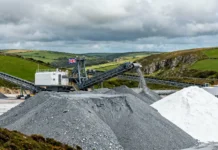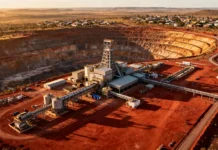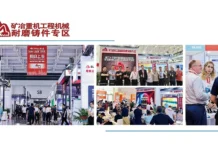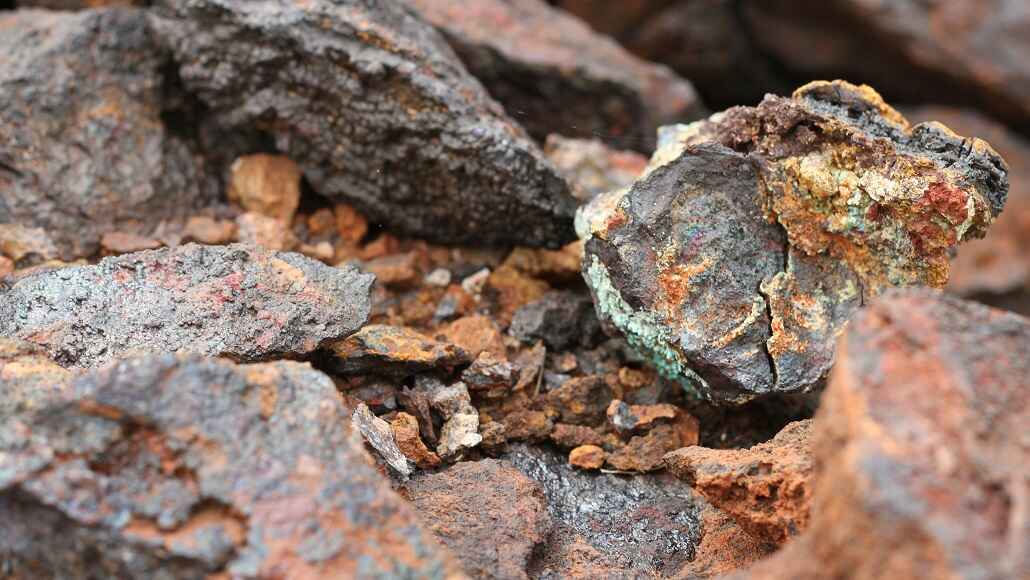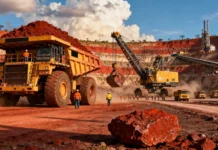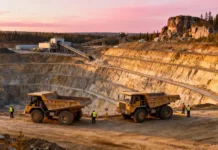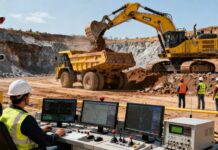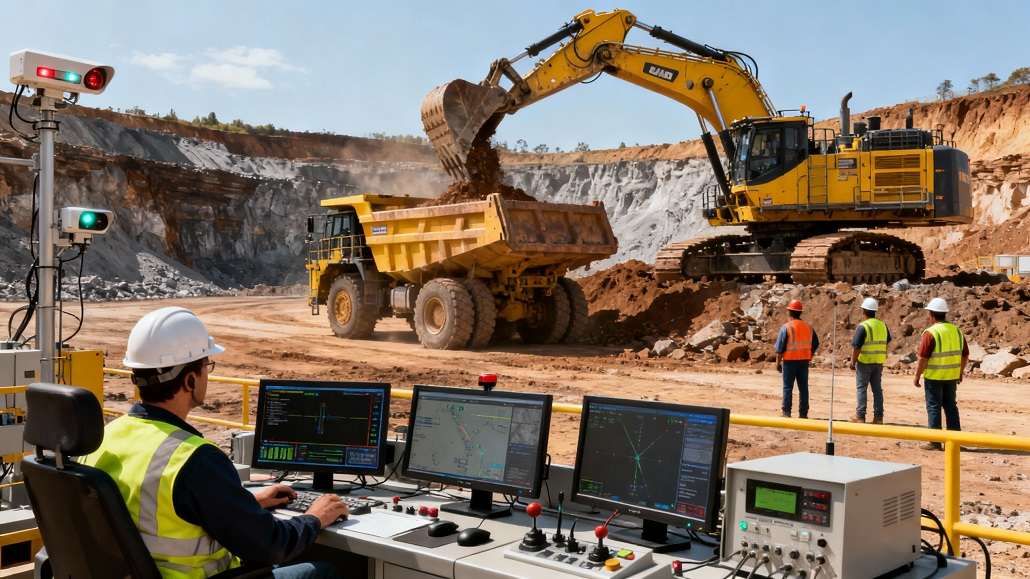Redefining Risk, Safety and Resilience Standards for the Modern Mine
Mining safety represents perhaps the most visible transformation occurring in mining operations today. Historically, mining accepted fatalities and injuries as inevitable industry costs. Workers understood mining as inherently dangerous occupation; companies managed risk primarily through post-incident investigation and compliance with minimum safety standards. This reactive paradigm is being supplanted by increasingly sophisticated, data-driven approaches where mining safety and resilience shift from compliance obligation into strategic competitive advantage.
Modern mining companies employ digital twins, predictive analytics, and advanced automation to anticipate hazards before incidents occur. Rather than investigating accidents after they happen, contemporary mining operations identify emerging risks before workers are endangered. This fundamental shift from reactive incident response toward proactive hazard elimination represents one of mining’s most consequential transformations, delivering simultaneous benefits in worker safety, operational continuity, and business performance.
The Traditional Mining Safety Model and Its Limitations
Conventional mining safety operated within reactive frameworks where companies responded to hazards after incidents revealed problems. Workers suffered injuries; companies investigated to identify causes; procedures adjusted to prevent recurrence. This cycle continued indefinitely, with each incident providing opportunity to incrementally improve safety practices.
This reactive approach, while better than no systematic safety management, inherently limits safety improvements. Serious incidents occur infrequently enough that systematic patterns remain invisible until many incidents establish trends. Fatal incidents provide extreme learning opportunities but at unacceptable human cost. Workers injured in novel hazard scenarios provide data enabling prevention of similar future incidents, but prevention occurs after injuries rather than preventing initial incidents.
The Predictive Safety Paradigm
Modern mining safety and resilience embrace fundamentally different paradigm. Rather than waiting for incidents to reveal hazards, digital systems continuously monitor conditions and identify emerging risks before incidents occur. Predictive analytics examining equipment performance, environmental conditions, and worker behavior identify patterns preceding incidents, enabling intervention before problems develop.
This predictive approach employs comprehensive sensor networks monitoring equipment condition, environmental factors, and worker activities continuously. Machine learning algorithms analyze this data, identifying patterns correlating with hazards. Equipment showing vibration patterns preceding failure receives maintenance before failure occurs; environmental conditions indicating dangerous air quality receive remediation before exposure hazards develop; worker fatigue levels identified through monitoring systems trigger rest interventions before fatigue-related incidents occur.
Digital twin technology enables testing potential interventions in virtual environments before real-world deployment. Managers can model how specific procedure changes affect safety, equipment, or production outcomes before implementing changes operationally. This virtual testing enables learning from simulated incidents rather than waiting for real incidents to reveal problems.
Automation as Safety Enhancement
Removing workers from hazardous environments represents perhaps the most effective safety strategy. Automation accomplishes this by deploying robotic and autonomous systems to perform dangerous tasks rather than exposing workers to hazards.
Autonomous haul trucks eliminate human drivers from potentially dangerous vehicle operations in active mine workings. Remote drill operation centers allow skilled operators to perform drilling from safe locations rather than proximity to drilling operations. Autonomous ventilation systems maintain air quality without requiring workers in potentially hazardous underground environments. Each automation application simultaneously improves safety by eliminating human exposure and improves operational efficiency through improved consistency.
Some of the most hazardous mining environments—deep underground operations, extreme heat or cold conditions, hazardous gas environments—are increasingly becoming entirely autonomous. Rather than workers operating in these conditions, robotic systems perform extraction and processing while humans supervise remotely from safe, comfortable environments.
Real-Time Hazard Identification and Adaptive Response
Comprehensive monitoring systems enable real-time hazard identification triggering immediate responses. Air quality sensors detecting dangerous gas concentrations automatically trigger ventilation adjustments; falling rock sensors identifying unstable conditions alert workers and machinery; water buildup sensors identifying flooding risk initiate pumping before flooding occurs.
This real-time response capability requires sophisticated integration between monitoring systems and operational controls. Alerts must reach relevant personnel immediately; response systems must activate automatically without requiring manual intervention delays. Advanced mining operations now achieve this integration, enabling hazards to be addressed within seconds rather than hours.
Adaptive management principles enable systems to learn from near-misses and incidents, continuously improving response effectiveness. Each incident or near-miss provides data enabling system refinement. Over time, these continuously improving systems become increasingly effective at preventing incidents before they occur.
Organizational Resilience and Crisis Response
Beyond preventing incidents, modern mining approaches emphasize organizational resilience enabling rapid response and recovery when disruptions do occur. Rather than viewing incidents as problems to be hidden and managed, resilient organizations view incidents as learning opportunities and organizational stress tests.
Resilient mining operations maintain comprehensive business continuity planning, backup systems for critical functions, and trained personnel capable of assuming elevated responsibilities during disruptions. Rather than single points of failure where individual equipment or personnel loss creates operational collapse, redundancy and cross-training ensure operations continue despite disruptions.
Psychological safety represents critical component of resilient organizations. Workers and managers feeling safe reporting near-misses and hazards without fear of punishment enable comprehensive problem identification. Organizations where incident reporting triggers investigation focused on improving systems rather than punishing individuals capture vast reservoirs of safety information unavailable to organizations where reporting triggers blame and punishment.
Data-Driven Decision Making in Safety Management
Mining safety and resilience increasingly depend on sophisticated data analysis revealing patterns and correlations invisible through conventional approaches. Advanced analytics identify equipment failure precursors enabling preventive maintenance; identify environmental conditions preceding incidents enabling hazard mitigation; identify training needs enabling capability development before competency gaps cause incidents.
This data-driven approach enables moving beyond one-size-fits-all safety protocols toward customized approaches addressing specific operation risks. Different mining operations face different hazards; different equipment has different failure modes; different geological conditions present different challenges. Data-driven approaches identify these differences and tailor safety strategies accordingly.
Benchmarking mining operations against peer comparisons enables identifying safety performance lags and best practice adoption. Companies dramatically outperforming peer safety metrics likely employ approaches other operators should evaluate. This competitive comparison dynamic drives industry-wide safety improvements as companies compete to maintain safety leadership.
Investment in Safety Culture and Leadership
Technical systems enable safety improvements but cultural factors ultimately determine whether organizations achieve sustainable safety excellence. Organizations with strong safety cultures where all personnel understand safety as core value achieve superior safety performance compared to organizations where safety represents compliance obligation.
Leadership commitment proves critical in establishing safety culture. When senior executives demonstrate genuine safety commitment through resource allocation, personal involvement, and explicit prioritization of safety over short-term productivity, organizational cultures shift toward valuing safety. Conversely, organizations where leadership implicitly or explicitly treats safety as constraint on productivity develop cultures where workers view safety requirements as obstacles rather than protection.
Training and competency development represent ongoing requirements. Workers understanding hazards and equipped with skills to respond effectively prove far safer than workers lacking understanding or capabilities. Mining companies investing in comprehensive training programs achieve superior safety outcomes compared to companies treating training as minimal compliance requirement.
The Future of Mining Safety: Zero-Incident Operations
The trajectory of mining safety evolution points toward increasingly sophisticated operations approaching zero-incident performance. Emerging technologies like advanced artificial intelligence for hazard prediction, quantum computing for complex risk analysis, and augmented reality for hazard visualization suggest next-generation safety capabilities will continue improving.
Leading mining companies are establishing zero-incident cultures where operations strive for complete elimination of serious incidents. While perfect performance may remain theoretically impossible, the pursuit of zero incidents drives continuous improvement and organizational focus on hazard elimination. Mining operations adopting zero-incident philosophy demonstrate substantially better safety performance than competitors maintaining traditional approaches.
For mining companies and workers, this evolution represents genuinely positive transformation. The mining industry historically accepted deaths and injuries as inevitable costs of mineral production. Contemporary mining demonstrates that accident-free operations are increasingly achievable. Workers need not accept injury risk as occupation cost. Companies pursuing mining safety and resilience advancement invest in worker protection for moral and practical reasons, creating mining environments where workers can pursue productive careers without accepting unwarranted safety risks.



